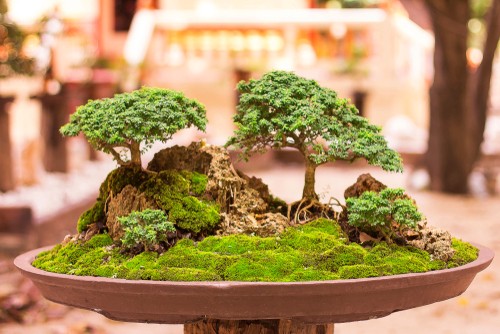
The Art and Controversy of Bonsai Plant Care: A Guide for Beginners
What is Bonsai?
Bonsai is the ancient Japanese art of cultivating miniature trees in containers, creating a representation of nature on a small scale. The word "bonsai" translates to "planted in a container" (bon - tray or pot, sai - to plant) and has been practiced for centuries, evolving into a unique form of art that captivates enthusiasts worldwide. A well-crafted bonsai can evoke a sense of tranquility, balance, and beauty, reflecting the essence of nature in a compact, living form.
The Artistic Perspective - Bonsai as an Art Form:
To many, bonsai is a living art form that demands skill, patience, and creativity. The process of training and shaping the tree, from selecting the right specimen to meticulously pruning and wiring its branches, is seen as an artistic endeavor. Bonsai enthusiasts often refer to their trees as "living sculptures," admiring the aesthetics of a perfectly balanced, harmonious design.
The Controversial Aspect - Bonsai and Cruelty:
While some people perceive bonsai as art, others express concerns about the potential cruelty involved in the art form. Critics argue that restricting a tree's growth through constant pruning and root trimming can be harmful, as it may stunt the tree's natural development. Additionally, the practice of bending and wiring branches can be perceived as causing physical discomfort to the plant. However, proponents of bonsai argue that when done responsibly and with care, the art form promotes a deep connection with nature and can benefit the tree's overall health and longevity.
Popular Bonsai Trees in India:
In India, several tree species are popular for bonsai cultivation due to their adaptability to the climate and aesthetic appeal. Some common choices include:
- Ficus Retusa (Banyan Fig)
- Ficus Microcarpa (Indian Laurel)
- Juniper Procumbens Nana (Dwarf Juniper)
- Carmona Retusa (Fukien Tea)
- Bougainvillea (Paper Flower)
- Pomegranate
- Jade Plant (Crassula Ovata)
Water Requirements of Bonsai Plants:
Proper watering is essential for the health of a bonsai tree. The frequency of watering depends on various factors, such as the tree species, pot size, climate, and soil. As a general rule, it is better to water when the topsoil starts to dry, but before the tree shows signs of wilting. It is important not to overwater, as this can lead to root rot. Equally, allowing the tree to dry out completely can stress it and cause irreversible damage.
Manure and Fertilizer Requirements of Bonsai:
Bonsai trees require regular feeding to maintain their health and encourage growth. There are both organic and chemical fertilizers available specifically formulated for bonsai. During the growing season (spring to early autumn), it is recommended to fertilize the tree every two to four weeks. During the dormant season (late autumn to winter), reduce or stop fertilization to allow the tree to rest.
Sunlight Requirements of Bonsai Plants:
Most bonsai trees thrive in locations with ample sunlight. However, the specific sunlight requirements vary depending on the tree species. In general, providing a balance of direct sunlight and filtered light is ideal. Placing the bonsai outdoors during the growing season and gradually introducing it to full sun helps develop strong, healthy growth.
Other Important Information:
- Pruning: Regular pruning helps maintain the desired shape and size of the bonsai. Pinching back new growth and trimming excess branches is essential for creating a well-proportioned tree.
- Repotting: Bonsai trees need to be repotted every few years to refresh the soil and prevent root-bound conditions. The timing of repotting depends on the tree's age and species.
- Protection: In extreme climates, protect sensitive bonsai from harsh weather conditions by moving them indoors or providing appropriate shelter.
Bonsai is a captivating art form that combines horticulture, creativity, and patience. While opinions about bonsai vary, it is crucial to remember that responsible care and attention are vital for the health and well-being of these miniature living sculptures. With proper water, sunlight, and nutrient management, bonsai enthusiasts can nurture and enjoy these extraordinary creations for years to come.
Principal Scientist worked for a StealthMode PlantCo.
3moActually, Bonsai was originated from ancient China. Japan directly borrowed the sounds of "盆栽[Pénzāi] and made it as Bonsai in Japanese.